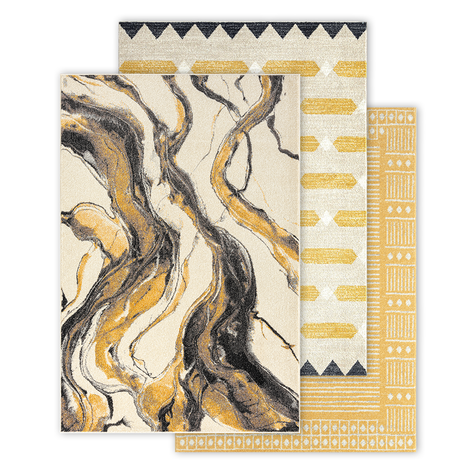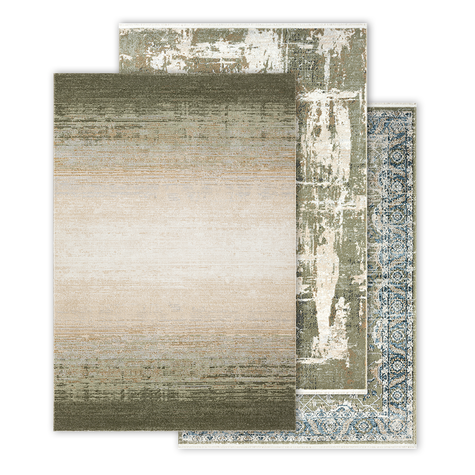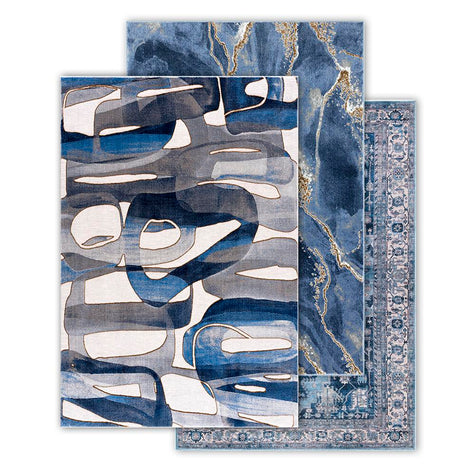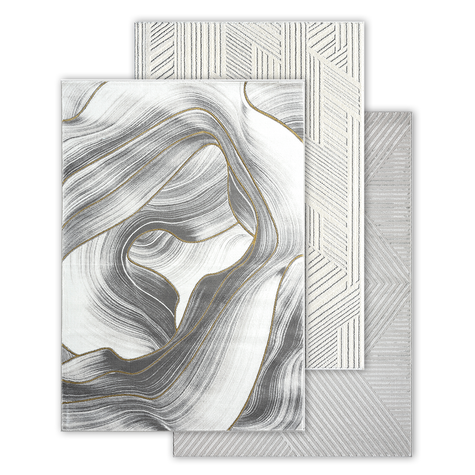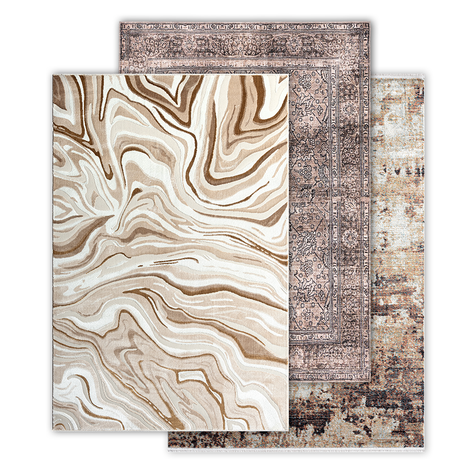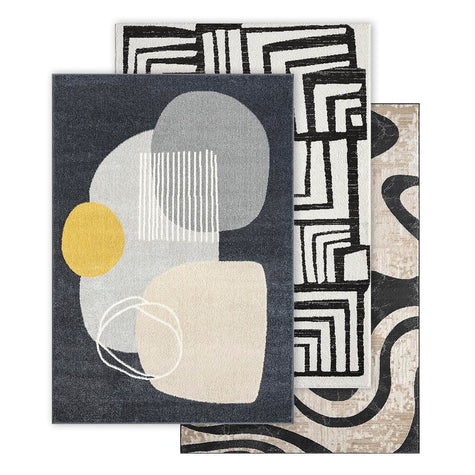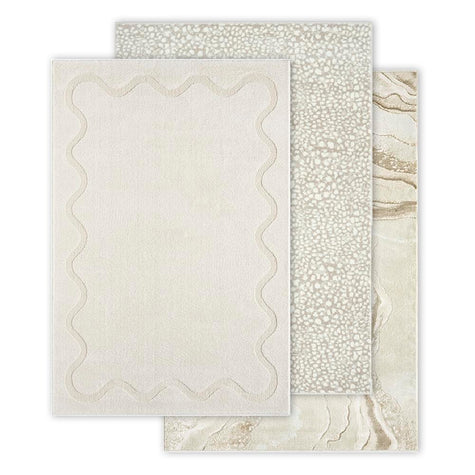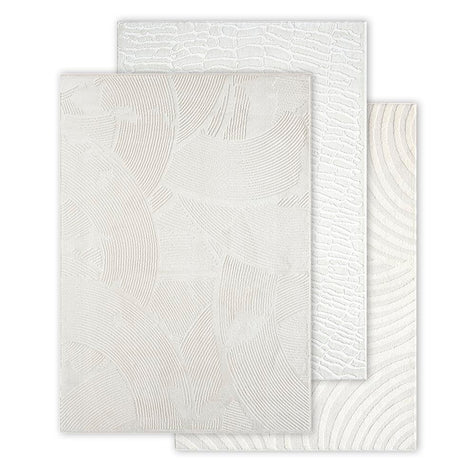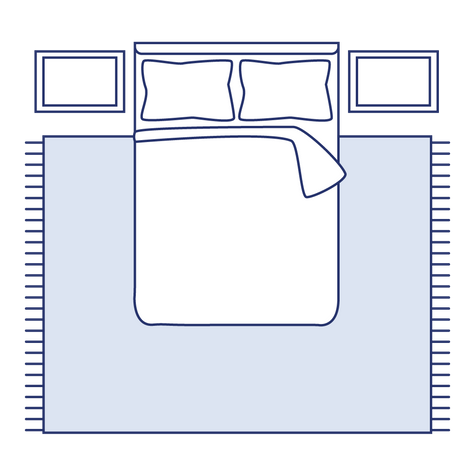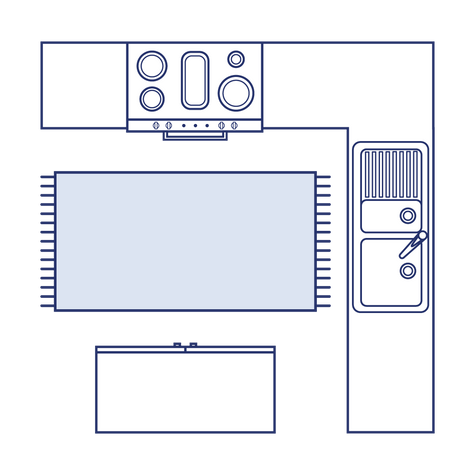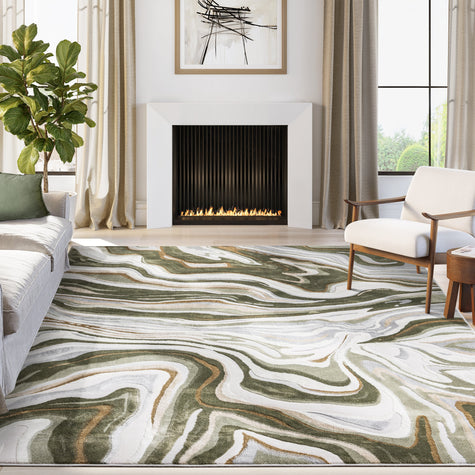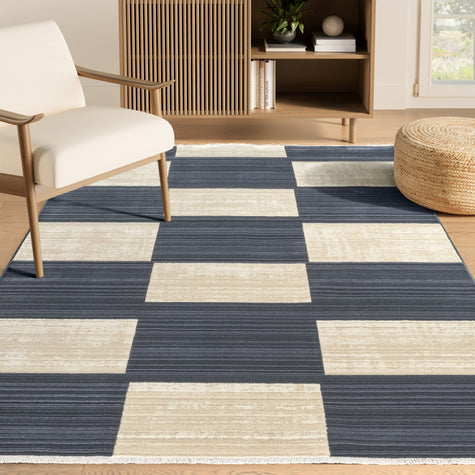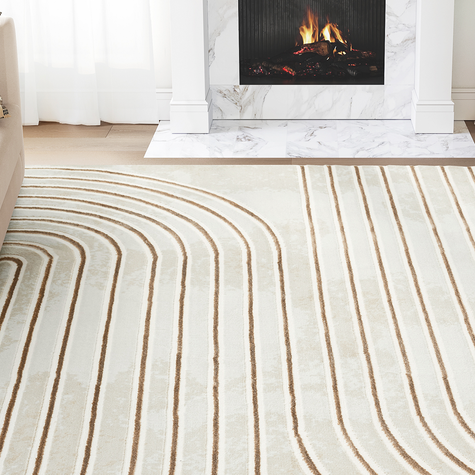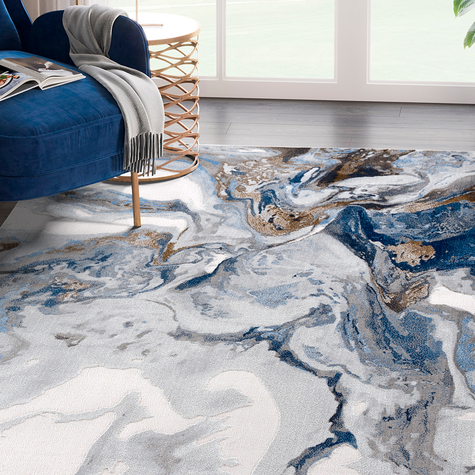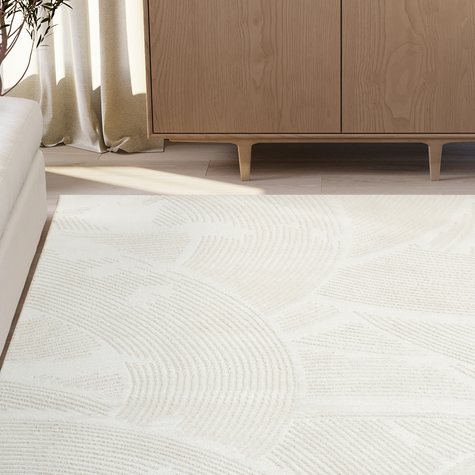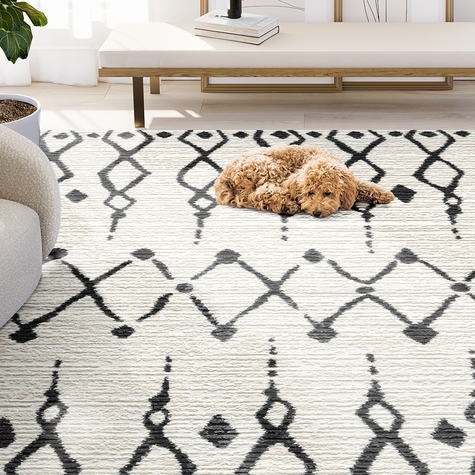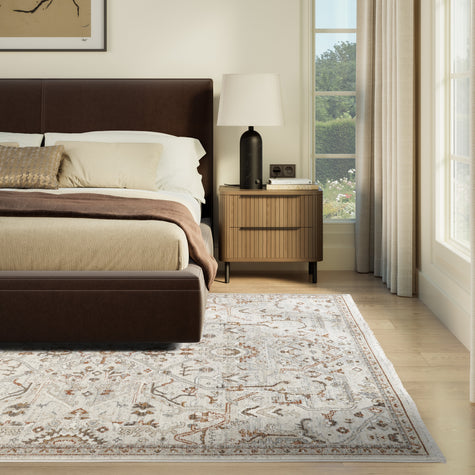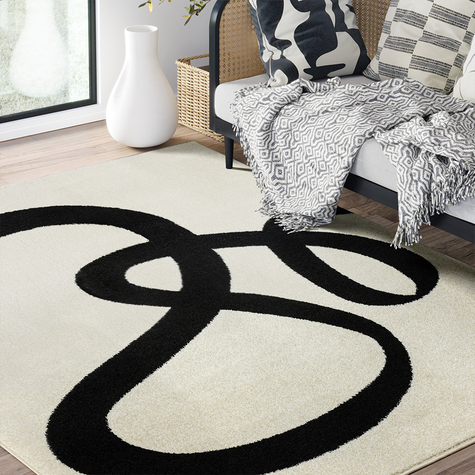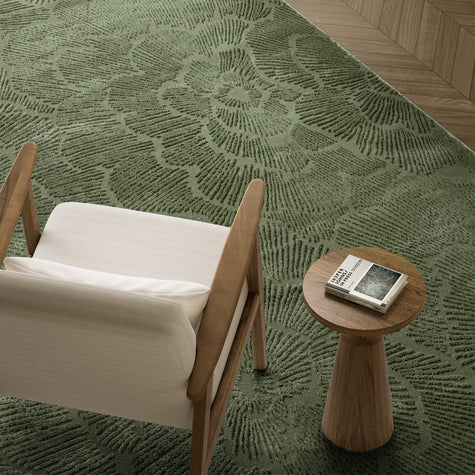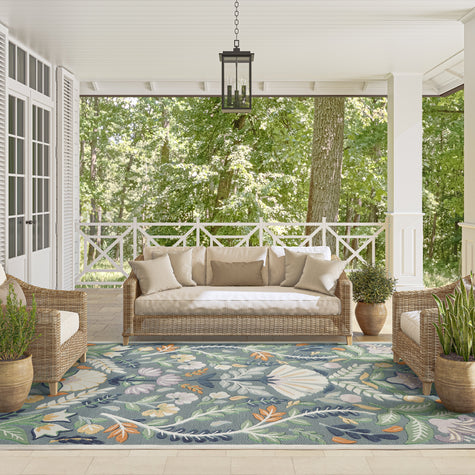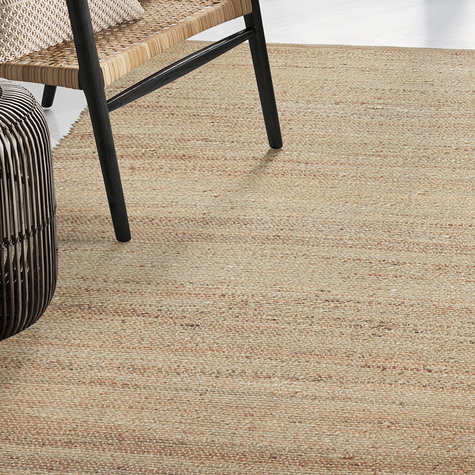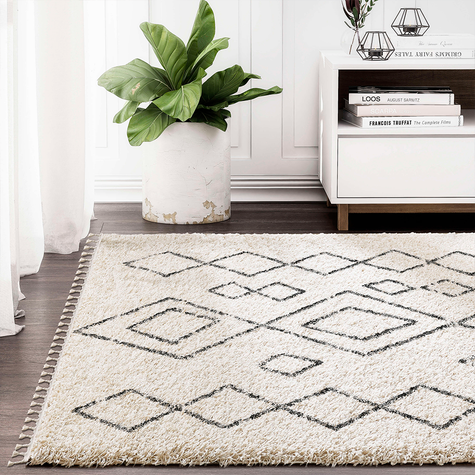When putting together a comfortable, welcoming space, it’s important to look at the room as a whole. Like pieces of a puzzle, each individual accent adds something special. One of the most stand-out design pieces that completely transforms your space is your rug. However, how do you choose the right size rug?
Rug sizing can be tricky, especially if you’re new to interior design. The rug size you choose for your bedroom might not fit your dining room and vice versa. Luckily, this guide is here to help. Keep reading to learn how to choose the right size rug no matter your space. We’ll be exploring different rug sizing for living rooms, dining rooms, bedrooms, and kitchens.

Living Room Rug Sizing
First, one of the biggest statements in your home is your living room rug. This helps define the space, bringing together your existing furniture and design aesthetic. A living room rug also serves a practical purpose. It helps with the overall acoustics of the room, provides warmth underfoot and it can define specific living areas.
There are 3 main rug sizes you’re likely to use in your living room:

Dining Room Rug Sizing
Next, how should you place rugs in your dining room? Unlike your living room, this is more straightforward. It’s traditional to place the rug directly under your table and chairs, centering the space.
The best rule-of-thumb is to make sure your rug is at least 30” longer than your dining table on every side. This means you can easily pull the chairs in and out while staying on the rug.

Bedroom Rug Sizing
In your bedroom, a rug adds a touch of comfort and ease. After a long day, it’s nice to have a plush, comforting rug to end the day. Typically, the area rug goes under the bed in a large space. However, this might not work depending on the size of your space or bed.

Kitchen Rug Sizing
Lastly, don’t forget your kitchen. Because your kitchen is a functional space in your home, it often makes sense to place a runner or larger area rug. Not only does this coordinate with your style, but it also adds much-needed comfort in an otherwise plain space.
There is no one-size-fits-all guide for kitchen rug sizing. This is when it pays to explore different shapes, like runners. A kitchen runner is a long, narrow rug that works best in high-traffic areas like in front of your sink. You’ll often find these in galley-style kitchens or small spaces. If you have a large, open kitchen, a 5’x7’ rug can help define the space.

Find the Right Rug Size
As you can see, choosing the right rug size goes a long way to upgrading your interior design. You don’t need to be a professional stylist to try these professional tips for yourself. Consider the shape and size of your room, along with your design goals.
When in doubt, use this guide above. There is a science to choosing the right size rug, and it will make all the difference in your space.

